“G Major” (or the key of G) is a major scale based on G, with the pitches G A B C D E F#. Its key signature has one sharp: F#. Its Relative Minor scale is E Minor. Its Parallel Minor is D Minor.
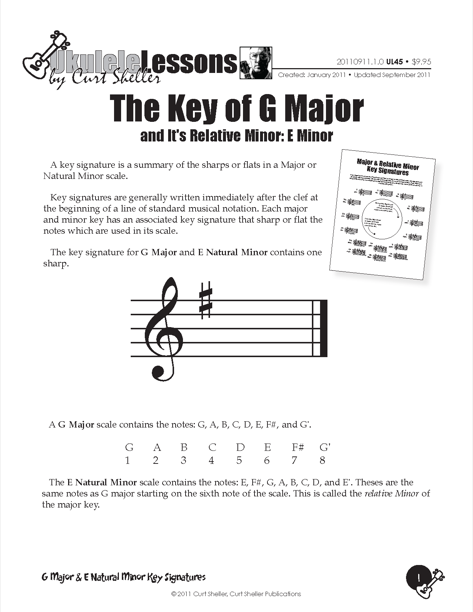
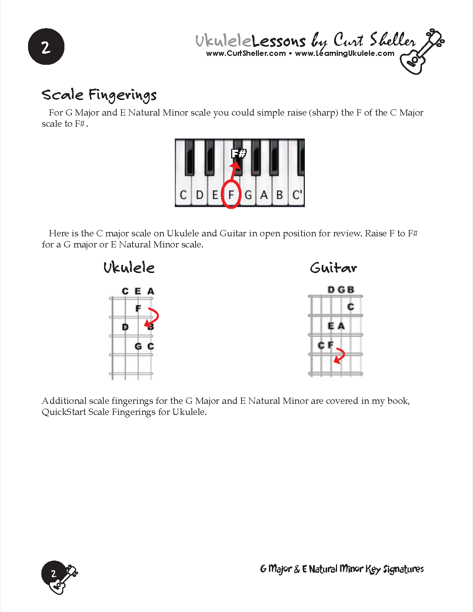
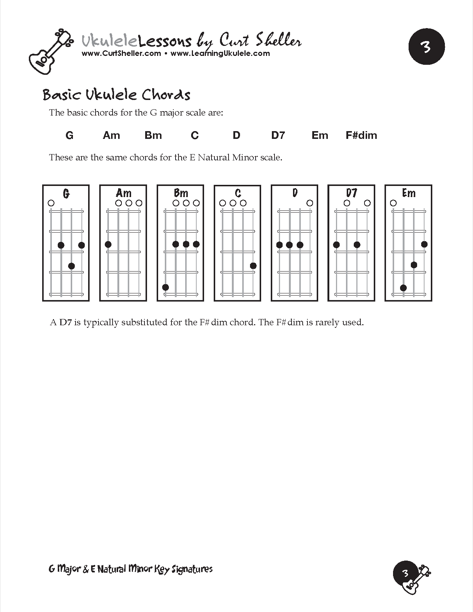





“G Major” (or the key of G) is a major scale based on G, with the pitches G, A, B, C, D, E, and F#. Its key signature has one sharp, F#.
Its relative minor is E minor, and its parallel minor is G minor.
G major, sometimes called the "people's key", is one of the most frequently-employed keys across classical and popular music. This is in part because of its relative ease of playing on both keyboard and string instruments: its scale comprises only one black note on the keyboard, all of a guitar’s six strings can be played open in G, half of the strings on the mandolin and violin/fiddle are in the G chord when open, and the banjo is usually tuned to open G. It is the key stipulated by Queen Elizabeth II to be used for “God Save the Queen” in Canada. The music to the American national anthem, The Star-Spangled Banner, was originally written in G major. Though it is now usually sung in A-flat or B-flat major, some people, most notably humorist and commentator Garrison Keillor, are campaigning to return the song to its original key; they argue that the song is already very difficult to sing on account of its range (one and a half octaves), and the modern standard key makes it still more difficult.
Key of G Major / E Minor
To identity a sharp (♯) key based on the Key Signature , you can look at the last sharp – that is the key. This works on all sharp key signatures.
If there is only one sharp it's the Key of G Major / Em – any a very popular ukulele, guitar and mandolin key and easy sharp key to recognize.
Key of G Major / Em Minor
“G Major” (or the key of G) is a major scale based on G, with the pitches G, A, B, C, D, E, and F#. Its key signature has one sharp, F#.
Its relative minor is E minor, and its parallel minor is G minor.
G major, sometimes called the "people's key", is one of the most frequently-employed keys across classical and popular music. This is in part because of its relative ease of playing on both keyboard and string instruments: its scale comprises only one black note on the keyboard, all of a guitar’s six strings can be played open in G, half of the strings on the mandolin and violin/fiddle are in the G chord when open, and the banjo is usually tuned to open G. It is the key stipulated by Queen Elizabeth II to be used for “God Save the Queen” in Canada. The music to the American national anthem, The Star-Spangled Banner, was originally written in G major. Though it is now usually sung in A-flat or B-flat major, some people, most notably humorist and commentator Garrison Keillor, are campaigning to return the song to its original key; they argue that the song is already very difficult to sing on account of its range (one and a half octaves), and the modern standard key makes it still more difficult.
Key of G Major / E Minor
To identity a sharp (♯) key based on the Key Signature , you can look at the last sharp – that is the key. This works on all sharp key signatures.
If there is only one sharp it's the Key of G Major / Em – any a very popular ukulele, guitar and mandolin key and easy sharp key to recognize.
Key of G Major / Em Minor
Related Lessons, Videos, Lesson Series, Songs, Books & Reference Charts, Resources & Assets, Workshops are below.
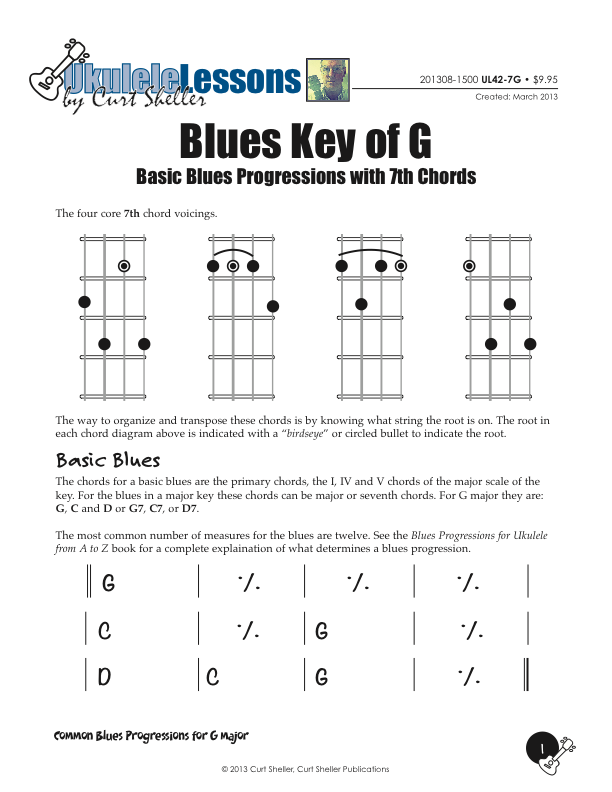
Basic and Quick Change blues chord progressions in the key of G major using the core 7th chords from the Big Six series of lessons. This is great way to explore this core chord in various keys. These are the two most common blues progressions used in traditional and contemporary music.
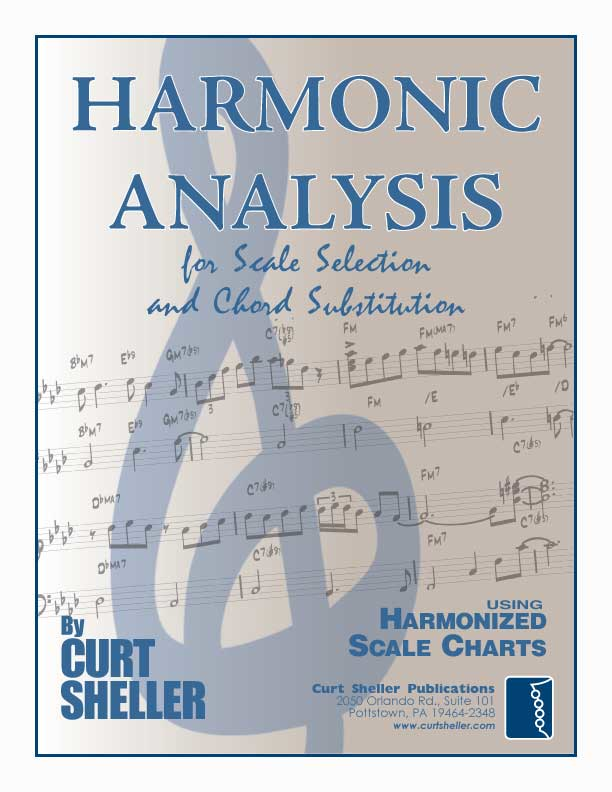
Harmonic Analysis is the understanding of the functional sequence of chords. It is the process used to analyze the harmonic structure of a progression, song or composition. This analysis is then used to make scale selections for improvisation and chord substitution.

Finally, learn the names of the notes of the ukulele fingerboard in C tuning .

Learn the six fingering principles to navigating the ukulele fingerboard. Fingering is one of the most universal topics. Book: Six Secrets of the Ukulele Fingering

Harmonic Analysis is the understanding of the functional sequence of chords. It is the process used to analyze the harmonic structure of a progression, song or composition. Book: Harmonic Analysis for Scale Selection and Chord Substitution
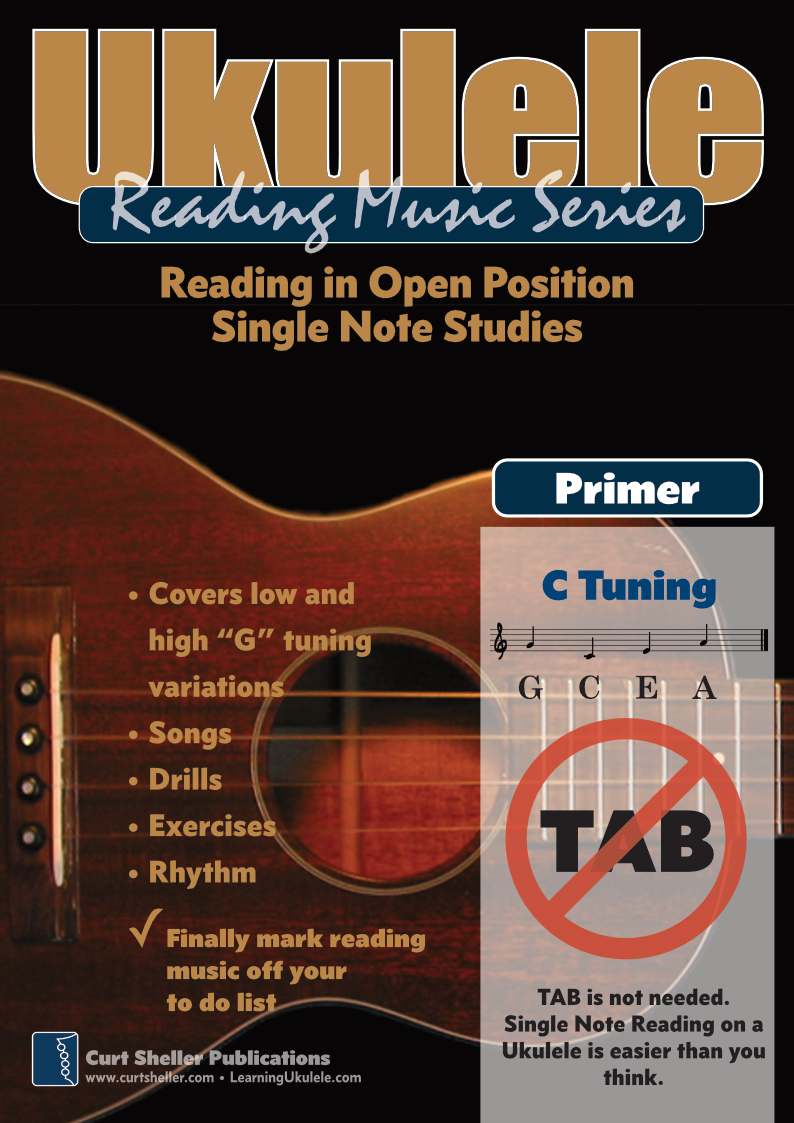
Learn to read single note melodies in the first/open position is a lot easier than you might think. Book: Ukulele – Reading Music Series – Primer
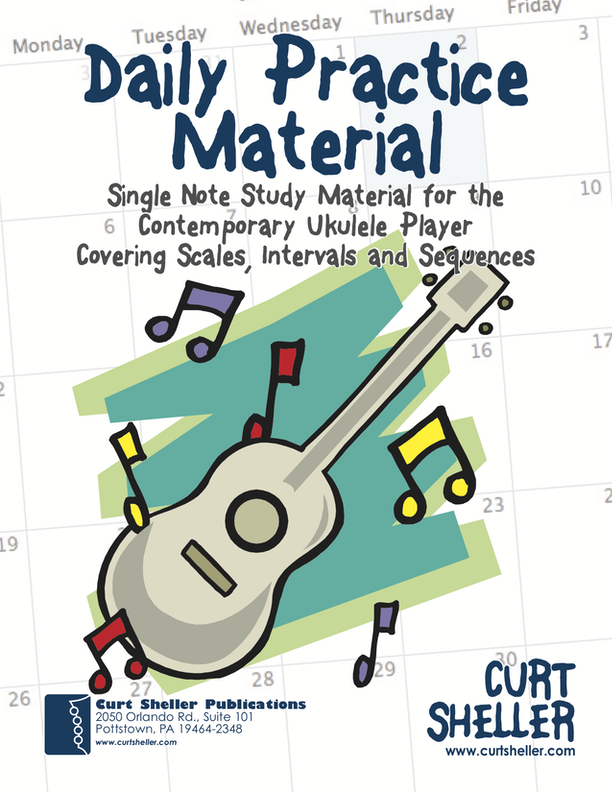
An organized collection of daily practice and reference material for the contemporary ukulele player for developing the vocabulary and knowledge necessary for single note playing. Book: Daily Practice Material for the Contemporary Ukulele
Checkout the Books & Reference Charts for additional Handy, Dandy Reference Charts.
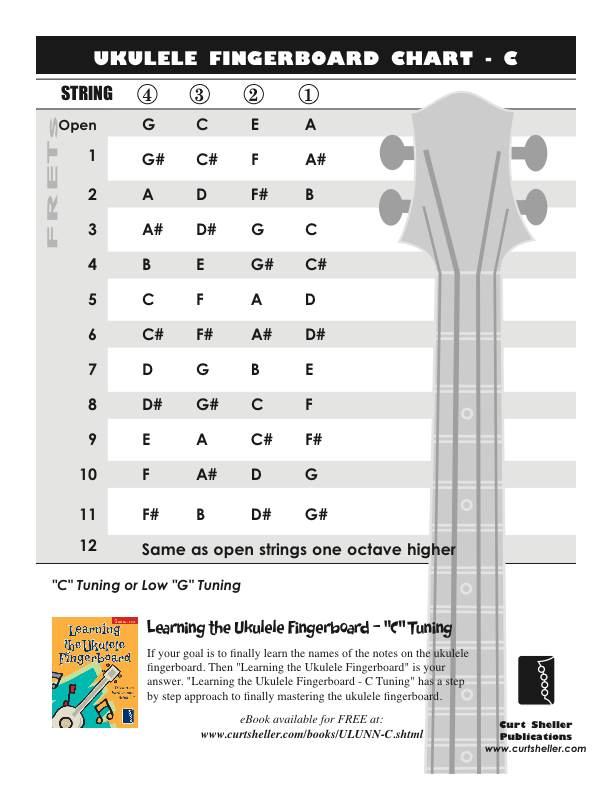
Ukulele Fingerboard Chart for C Tuning, Low or High G – G C E A
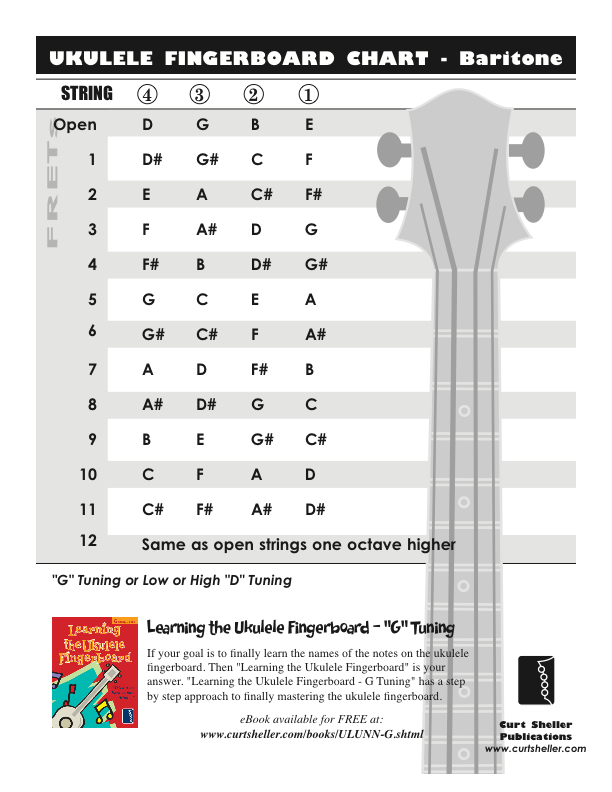
Ukulele Fingerboard Chart for G Tuning, Low or High A – D G B E

A handy reference chart of all 15 major and relative minor key signatures. US Letter 8.5 x 11 sized (ANSI-A), A4
Checkout the Books & Reference Charts for additional Handy, Dandy Reference Charts.



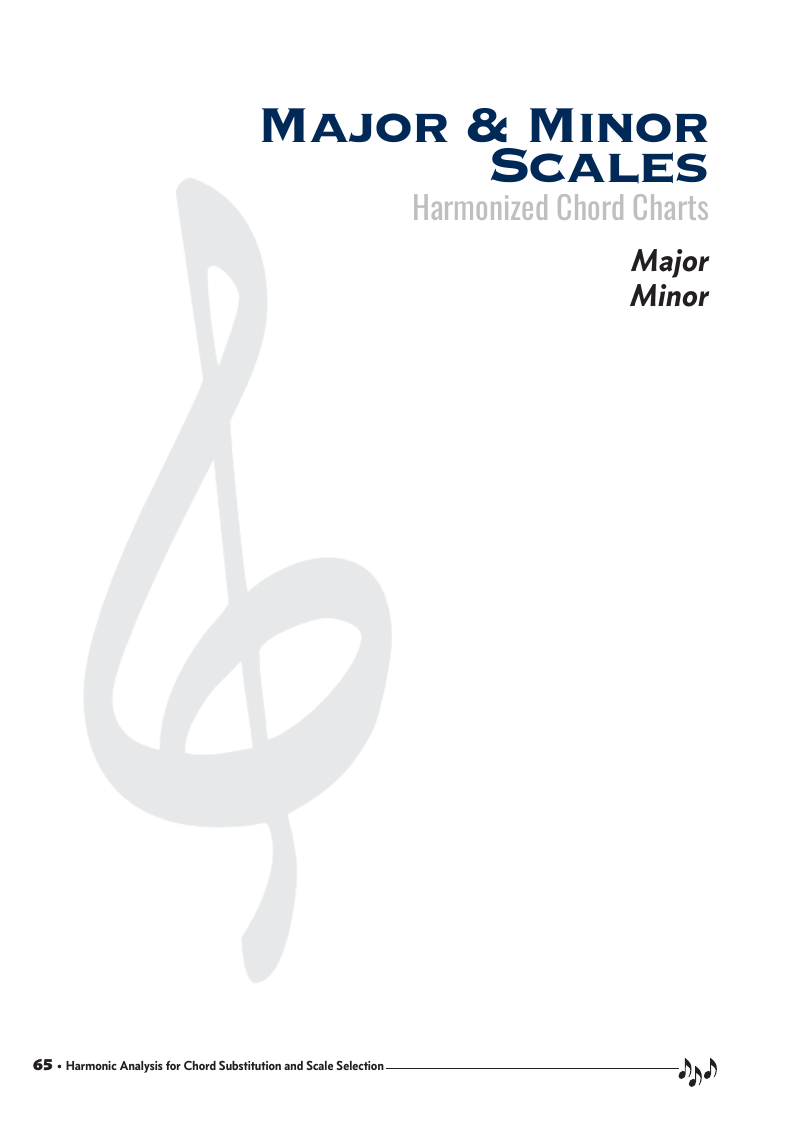

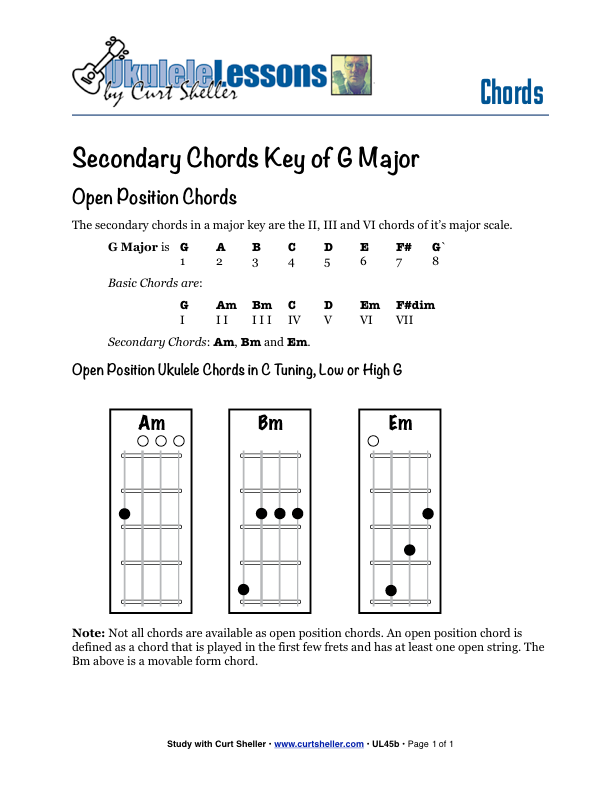
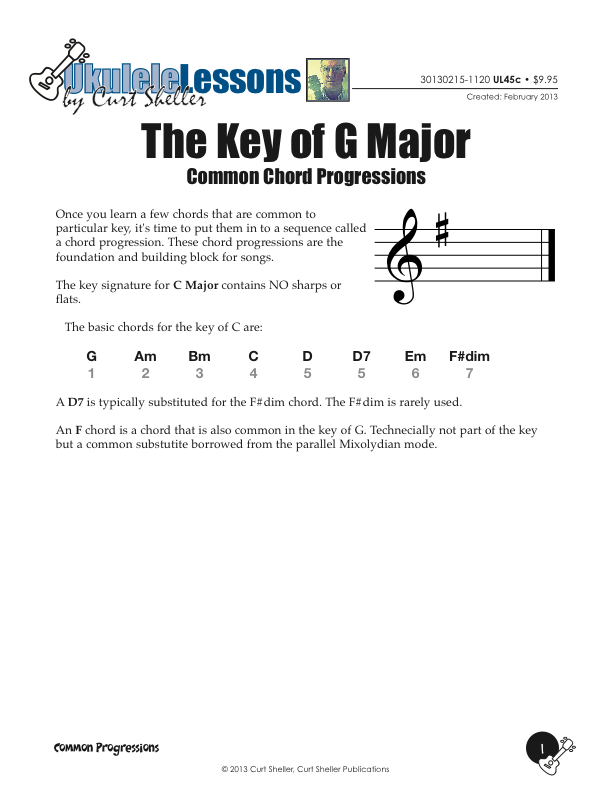

.jpg)